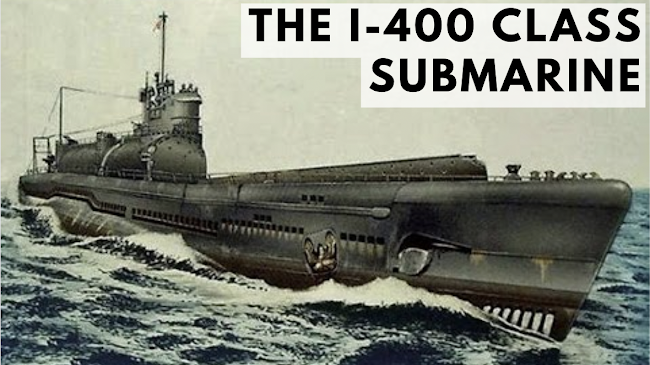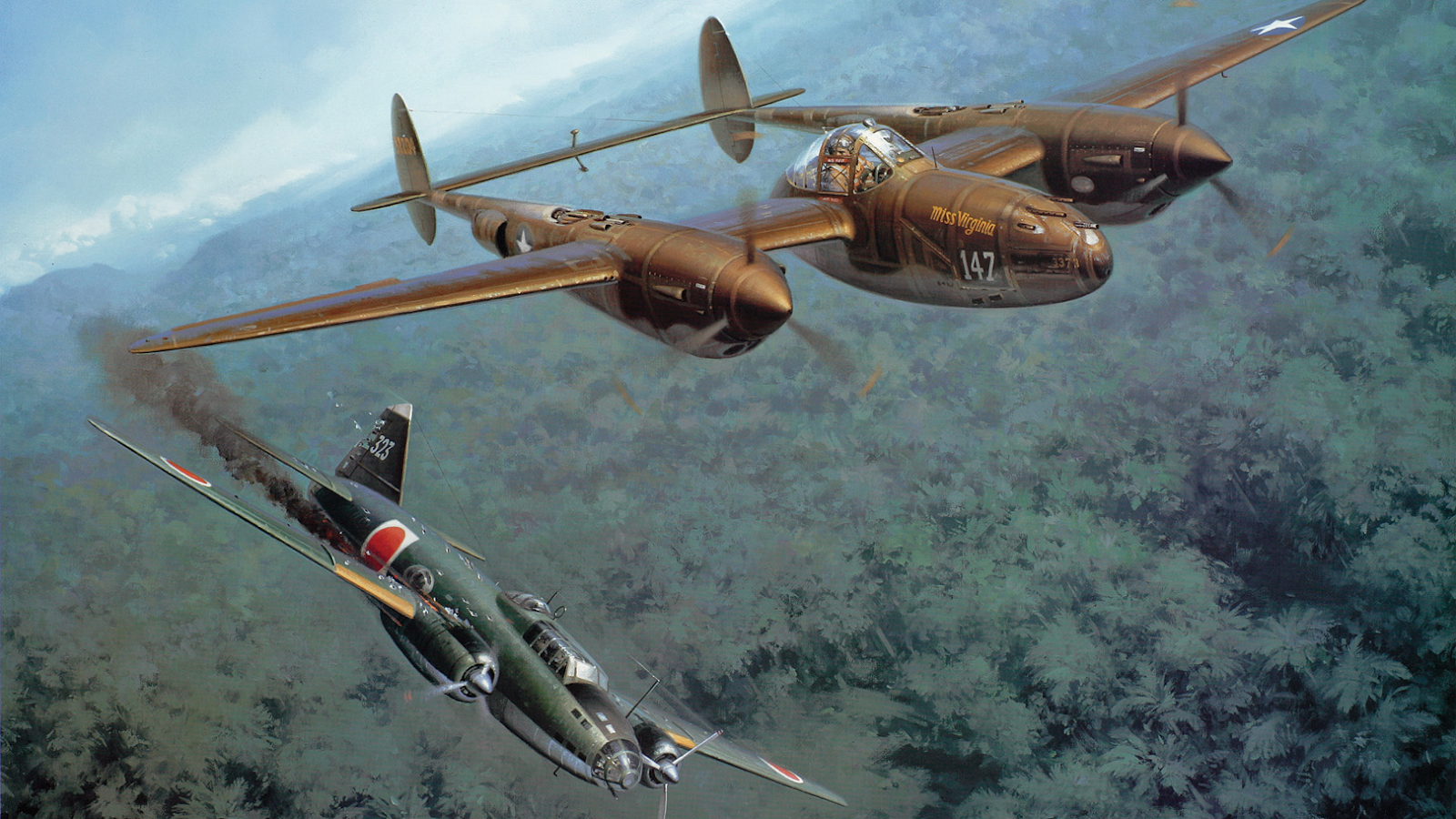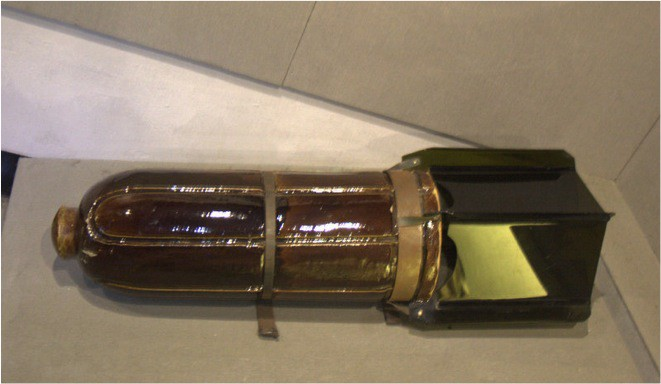THE I-400 CLASS SUBMARINE
By: Abhijay Bhosale
Welcome to 4th edition of the Unknown Off-Ground Series. This week's edition will show... something different. Normally, I show different types of planes, but this time, let's talk about a submarine. The last edition was about a flying aircraft carrier, so it only makes sense that this one's about an aircraft carrier... underwater. Armed with 3 planes each, these I-400s were being planned to be built tenfold. These could have been a super weapon. It could travel to the United States, empty its load, and then go all the way back to Japan again. Though this technology was already tested with smaller, less capable planes, these submarines would be able to carry full on attack ones. This is, the I-400.
Isoroku Yamamoto
Isoroku Yamamoto was a very prominent man in the Japanese navy. Getting his education from Harvard in the United States, he rose the ranks back in Japan through his skill and knowledge on sea warfare. Yamamoto looked after many expansions of Imperial Japan by starting an island-hopping campaign for the resources the country sorely needed, but in the peak of his career, he's most known for this: masterminding the attack on Pearl Harbor. Throughout all of Japan he was decorated as a hero. He already came from a prestigious samurai family, and because of this, his reputation only grew. He was a brilliant man who devoted his life to the Emperor, a role model for all. But in actuality, that wasn't the truth at all. Yamamoto was actually against the plan in many ways, and in his diary said that it was Japan's greatest mistake. After this monumental success, Yamamoto's life quickly declined. The US declared war on Japan, and started an island hopping campaign of their own. They took islands that grew gradually closer to Japan, and Yamamoto was chosen to fight the United States on the Pacific Front. When intercepted radio messages were discovered, it was found that the United States would be attacking Midway next. If they could ambush the Pacific Fleet here, they could force the US into submission. 4 out of 6 of Japan's aircraft carriers were sent to intercept the American War machine. Yamamoto was confident that the battle would be won. Although he didn't support going to war with the US, he also couldn't let them take over his country. The Japanese threat lumbered ever closer to Midway, ready to catch the Pacific Fleet off-guard. But that's what they expected. By planting false intelligence and letting them be intercepted by Japanese decoders, they ambushed the ambush. All 4 carriers were destroyed. Japan needed a new weapon to replace their carriers since they were too big, vulnerable, and resource-consuming. That's when Yamamoto pitched the idea for the I-400. The higher-ups were hesitating going ahead with the plan, but after Yamamoto greatly persuaded for its production, 18 were promised to Yamamoto. And thus started the production of this superweapon.
The Submarine and the Plane
The I-400s plan wasn't completely radical. Launching planes off of submarines had been already tried and tested by the British. But, as previously mentioned, it was only with smaller, less capable reconnaissance planes. However, these recon planes couldn't even be submerged, so that meant Japan had to make a plane that could be submerged. launched, and then recovered. But let's not go too far ahead. Let's talk about the submarine as itself. Even without the planes, it was still a very deadly ship. It had 8 forward mounted torpedo launchers as well as a 14cm caliber gun, a caliber which is 1/4 of what Japan's most formidable battleship, the Yamamoto (wonder who he is), had. To repel enemy planes, it had 3x 25mm triple mounted (meaning it was attached to the sub by 3 mechanisms) anti-craft (AA) guns and a 4th single mounted 25mm AA gun. To carry the planes, it had a double hull design, essentially giving double the width of a normal submarine. On top of the deck, an airtight vessel was made to store the 3 planes. Now that we're on the topic of the plane, let's talk about it. You might remember last edition's airborne aircraft carrier, which needed to make parasite fighters. This time though, instead of having to remain airborne the entire time front launch to land, the I-400 could afford the luxury of sea-borne take off and landings. They still needed to develop a plane that could fit in the submarine though, so they decided to make the Aichi M6A Seiran. The plane could fit inside the submarine using foldable wings, not sideways like most people think on aircraft carriers, but rather folding down and then along the plane's fuselage. It was specially built to launch on a compressed air catapult that was on the submarine, and also had installable floats to land beside the submarine for recovery. To go back into the submarine, a foldable crane on it could lift the plane back onto the "deck" where the plane's wings could be collapsed and put back into the airtight container. The M6A could also go decently fast and had a nice range as well bomb capacity. The floats of the plane could be removed for greater maneuverability, but that would mean ditching their planes in the ocean. The submarine and plane were eventually produced and put into combat, but the key that led to their downfall... was timing.
Aichi M6A Seiran:
Why Did The I-400 Fail?
The I-400 failed because of a few major reasons. One, the entire submarine was built on stealth, and while reports said that it would take 30 minutes to unload all of the planes, in practice, it took 45 minutes. That meant that it would be enough time to locate the submarines, find them, and destroy them. Even if the submarines ran away, they would be leaving the planes that had launched from them, either dooming them to be captured, crash, or kamikaze. Even with the kamikaze as an option, Japan's plan was to use obsolete planes, not capable ones. It would be a loss to the empire. Another was the resources needed. At Midway, the loss of aircraft carriers were bad in every way. It meant a crippling need for the I-400s, but also the loss of resources needed for making them. The US's island hopping campaign only gained after they realized that 66% of the major vessels used to carry Japan's air force across the ocean were gone. Not to mention the Manhattan Project, the only 2 times nuclear bombs have been used in war. Like I said, it was bad timing. But that didn't mean that it wasn't used in a mission. It started out as 18, but it later went down to 5 planned, of which 3 were completed, and 1 put on a mission. But the way it was used... is underwhelming. As it went south to damage the Ulithi Atoll (a secret place where 15 American carriers were stationed which for a time was the world's largest naval facility), Japan surrendered as the submarine was mid-journey. Another tragedy also happened that made the I-400 lose steam. Just like the VVA-14 (if you don't know what that is, you might be able to read about... on this blog), when its creator died, so did the project. As Yamamoto was on scheduled inspection flight, another US espionage mission shot down his bomber transport. But would it have worked? Chances are, yes. The only problem was the under-delivery of its capabilities as well as unlucky timing.
Painting of Operation Vengeance, the plan to assassinate Yamamoto:
The Ulithi Atoll and Operation Cherry Blossoms At Night
This Unknown Off-Ground series requires a lot effort to make. Since these machines are, well, unknown, you find more than you need to know. And sometimes, they're stories worth sharing. The first thing to talk about is the Ulithi Atoll. Like the assassination of Yamamoto, many interesting things aren't put int he spotlight of other comparatively superficial things. When it first began, the Ulithi Atoll had a force of 106 destroyers, 29 carriers, 15 battleships, and 23 cruisers that sailed toward the port. Various measures were taken to make sure it wouldn't be found. While the island hopping campaign originally seemed like an east to west thing, a port smaller than an island north of Papua New Guinea, east of the Philippines, and way south of Japan allowed for the US to have a much faster attack pace. Instead of having to go to an island, fail a mission, and go all the way back to Hawaii or California, you would instead go closer to the enemy completely under the radar. The ships would go northeast and then west to avoid the island from being found by tricking the Japanese into thinking they were just coming from the east. Of course, it was eventually discovered, but being so late in the war, it didn't do much. The Ulithi Atoll helped the Allies win the war more than anything else in the war.
The place where you see "Yap." is the location of the Ulithi Atoll. The Ulithi Atoll is a part of Yap Island.
This is the second to last edition of this series, and if you've come this far, thank you. I simply cannot emphasize those 2 words by just writing them on this article. The final one will not disappoint. It's the middle of the Space Race, and the US wants to prove it can be bigger and better than the Soviet Union. Officials at NASA at working around the clock, when someone proposes, "Why not make it bigger?" This was the philosophy of the biggest rocket ever planned. Its name is perfect to describe it. The first word for its launch, the second word for its sheer power. This, is the Sea Dragon.









Comments
Post a Comment